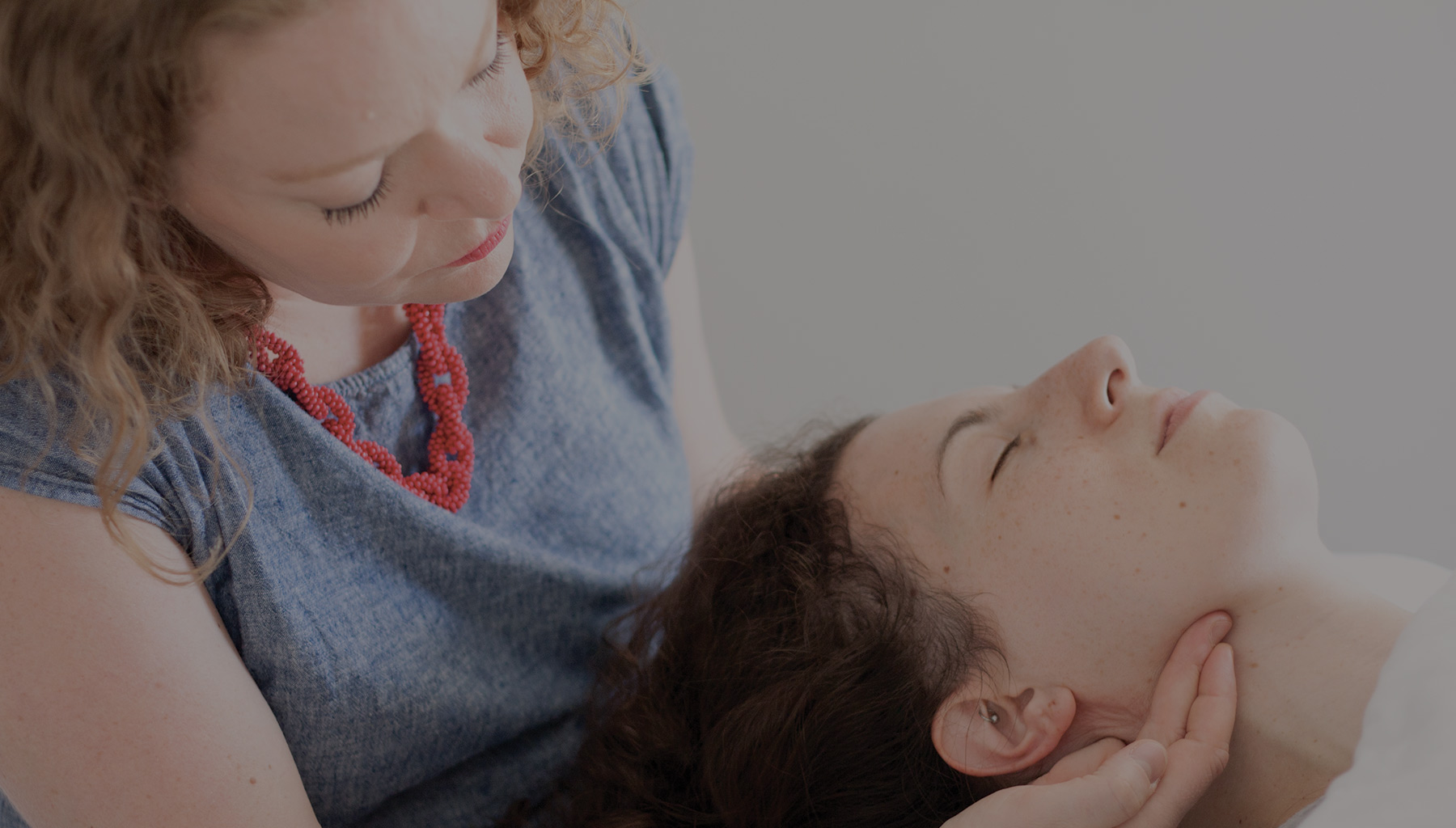Temporomandibular Joint Disorder
TMJD presents itself in various forms: TMJ pain, locking of the jaw (trismus), headaches, change in function, etc. The lower jaw (mandible) is a bone that includes two joints (TMJ), and since muscles attach to bone, dysfunction in any of the several muscles of mastication can elicit symptoms. There are many factors that lead to TMJD: clenching, grinding, physical trauma, stress, posture, and dental work being some examples.
A typical TMJD treatment focuses on the muscles of the jaw as well as those of the head and neck, as they often have tightness which contributes to the overall dysfunction and symptoms present. Intra-oral work is often indicated as part of the treatment to restore TMJ function and decrease pain.
Ear
Muscular tension in the jaw, head and/or neck can affect the ear. Patients can experience the following: tinnitus (ringing), vibrations, pressure, or a sense of fullness.
Anatomically, the auditory canal and the TMJ are in very close proximity to one another; dysfunction at the TMJ can affect the soft tissues in and around the ear(s). According to the Journal of Prosthetic Dentistry, people with TMJD (pain or no pain) are 8x more likely to develop tinnitus or ear related issues. Addressing the soft tissues of the head, neck and jaw can help alleviate symptoms present in the ear(s). The most common muscles treated are: Medial Pterygoid, Masseter, and Sterno-Cleido-Mastoid.
A typical treatment focuses on the soft tissues around the ear, jaw, head, and neck. Intra-oral work is often indicated if TMJD is suspected.
Voice / Swallowing / Speech
Professional speakers, singers, and actors benefit tremendously from this treatment. Tightness in the muscles at the front (anterior) of the neck, jaw, and/or tongue can alter the quality and function of the voice, as well as swallowing ability (dysphagia, various dysphonias). Some causative factors are: over-use, surgery, poor body mechanics, TMJD, or trauma to the area.
The treatment focuses on decreasing tension of the head, neck, jaw, tongue, and diaphragm. Intra-oral work is often indicated.
Tongue
Tongue tension can affect many activities of daily living. For instance, when chewing, swallowing, speaking or singing. Some of the conditions we treat are: Burning Mouth Syndrome, dysarthria, dysphagia, and dysphonia.
According to a study from the University of Bari, 65.9% of patients with Burning Mouth Syndrome have signs and symptoms of TMJD.
The approach to treatment is to assess and treat the tongue, jaw, and anterior neck muscles to minimize soft tissue tension, and increase function. Intra-oral work plays a big role in tongue rehabilitation
Head
There are a multitude of potential causes and symptoms surrounding the tissues of the head. Common conditions treated are concussions, migraines, headaches, local pain, post-surgical scar treatment, and facial pain.
The treatment is catered to the patient’s presenting dysfunction, symptom, and needs
Neck
There are various causes of neck pain and dysfunction; including injury, whiplash, post-surgical scarring, Thoracic Outlet Syndrome (TOS), posture and stress.
Local pain, headaches, decreased range of motion, and palpable tension of the muscles are all indications of the need for these tissues to be worked on.
Neck tension is not limited to the sides and back of the neck; many people also have tightness at the anterior (front) of the neck. Addressing all of the tissue of the neck aids in the overall rehabilitation of the dysfunction and symptoms.
Often this tension plays a role or is influenced by tightness of the soft tissues of the head, neck, and jaw. The treatment is catered to the patient’s presented dysfunction, symptoms, and needs.
Intra-oral massage is an advanced massage technique in which the muscles of the face and jaw are treated from inside the mouth. This type of treatment is very affective for releasing the muscular tension that contributes to many of the conditions treated at From the Neck Up.



